Intelligence
Milk by Any Other Name
Determining a "standard of identity" for milk.
Posted November 1, 2022 Reviewed by Lybi Ma

The twins Romulus and Remus, abandoned at birth by a cruel uncle, survived only because a she-wolf nursed them. According to some versions of the story, the infants, whose father was the god Mars, were later discovered and raised by a swineherd (Plutarch; Ruhräh, 1934.)
Romulus eventually killed his brother and founded Ancient Rome. Though not all accept the legend, artists have immortalized the image of the twins suckled by the she-wolf (Ruhräh.)
Many mammals, including cows, sheep, goats, camels, donkeys, and water buffalos, have provided milk for human consumption throughout the centuries; a she-wolf, though, is an unlikely donor and inevitably the stuff of myth.
"It seems a bold step to replace mother's milk with that of an animal," and no one knows exactly how that came about (Kurlansky, 2018.) Milk is the "most argued-over food in human history... and the most regulated of foods." People have contested the value of breastfeeding, the healthful or harmful qualities of milk, the best sources for it, and farming practices, among other things (Kurlansky.) (For a discussion on breastfeeding, see my post.)

More recently, people are even quarreling about the definition of the word "milk" itself, or in regulatory parlance, its standard of identity (Behrens, 2022; Gambert, 2019.)
Government authority for “labeling transparency” has a long history in the U.S. and dates back to 1906 with the Pure Food and Drug Act, which established that a food’s label could not be false or misleading. By 1938, the Federal Food, Drug, and Cosmetic Act (FDCA) set forth regulations for the quality and identity standards for all foods, including milk and other dairy products, that are manufactured, distributed, or sold in the U.S. A food is considered misbranded if it is sold under the name of another food or imitates another food without specifically indicating it is an imitation (Behrens.)
The Food and Drug Administration (FDA) has defined milk and established its standard of identity as the "lacteal secretion... obtained by the complete milking of one or more healthy cows," though the definition has been extended to include milk from other mammals such as sheep and goats (Behrens; Irfan, 2018.)
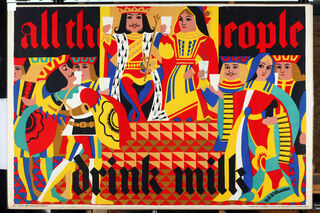
As the first food given to infants, milk has been considered a "wholesome, complete" food (Paul et al, 2020), with its "ideal balance" (Behrens) of proteins of "high biological value," fats, carbohydrates, vitamins, and minerals, including calcium (Silva et al, 2020.)
But it is not easily tolerated by all: about 75 percent of the world's population, (Silva et al.), with a wide genetic variation depending on ethnicity (O'Grady, 2022), are born with or develop intolerance to lactose, the natural sugar in cow's milk.
Further, statistics vary—but from 1.5 to 3 percent (Verduci et al, 2019) to about 4 to 6 percent of infants (Silva et al) cannot tolerate cow's milk in their first year of life since more than 20 proteins can cause an allergic reaction (Silva et al.) Although it is the most common allergy in infants, about 80 to 90 percent of children will acquire tolerance to cow's milk by age 6 (Verduci et al.)
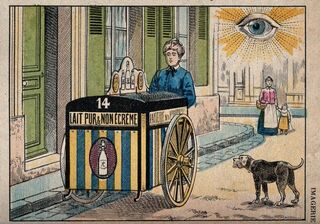
Moreover, some object to cow's milk because of concerns for the environment (e.g., land use, greenhouse gases, pollution) or animal rights, or even a desire to adhere to a vegetarian diet (Behrens; Silva et al; Moss et al, 2022.)
Plant-based alternative beverages made from soy have existed at least since the 14th century in China (Moss et al; Behrens) and possibly much earlier (Gambert.) In more recent years, these beverages have gained increasing popularity. Projections indicate that the "plant milk-based market" will reach revenues of more than $38 billion by 2024 (Paul et al.) With so much at stake, the whole notion of “milk” has come under scrutiny (Gambert.) Former FDA Commissioner Scott Gottlieb was quoted as saying, "An almond doesn't lactate" (Irfan; Moreno et al, 2019.)
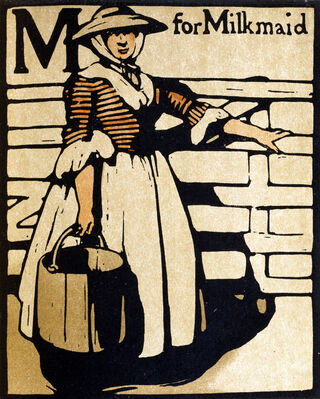
Though unlikely, some wonder whether products called almond milk, soy milk, cashew milk, coconut milk, and the like confuse consumers (Behrens) and even whether using the term "milk" is "exploitative" (Wolf et al, 2020.) Ironically, one definition of the expression "to milk" is to exploit (Oxford English Dictionary; Gambert.) Plant-based milk has been called "disruptive milk" (Gambert), "fake milk," (Irfan), or even "imitation milk" (Behrens.)
Class Action lawsuits and the so-called "milk wars" have resulted (Gambert.) Some have even suggested changing the word to mylk to differentiate the products (Gambert.)
What, though, are these plant-based, "non-dairy" (Vanga and Raghavan, 2018) alternatives? They are colloidal suspensions or emulsions comprised of plant material (Mäkinen, et al) that are extracted in water and further homogenized (Sethi et al, 2016; Silva et al.) They can be divided into five groups: cereal-based (e.g. oat milk, rice milk); legume-based (e.g. soy milk, peanut milk); nut-based (e.g. almond milk, coconut milk, hazelnut milk); seed-based (e.g. sesame milk, sunflower milk); and pseudo-cereal-based (e.g., quinoa milk) (Sethi et al; Moreno et al.)
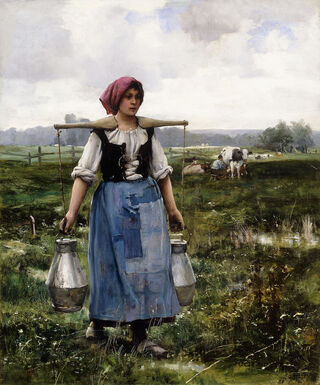
These beverages are manufactured by soaking, grinding, and heating under high pressure, as well as by adding stabilizers and emulsifiers, salt, caloric or non-caloric artificial or natural flavoring (e.g., chocolate or vanilla), or even vitamins and minerals (e.g., calcium.) Processing primarily increases shelf-life and improves palatability, since some can taste "beany" (Vanga and Raghavan) or "chalky" (Moss.) It also can also help create the more familiar mouth feel and consistency of cow's milk (Drewnowski, 2021; Monteiro et al, 2019.)
Each has its own unique nutritional profile, with distinct advantages and disadvantages. (See Verduci or Singhal et al, 2017 for differences among them.) Some advantages, for example, include the lack of cholesterol, lactose, or cow's milk protein (Silva et al.)
The nutritional value, though, depends on the plant source used, as well as the processing and fortification involved (Mäkinen et al.) Beverages made from almonds or oats, for example, contain half the protein of cow's milk (Collard and McCormick, 2020), and soy milk lacks calcium and vitamin B12 (Verduci.) When substituted for cow's milk in infants who are allergic, they will require additional fortification (Verduci et al.)
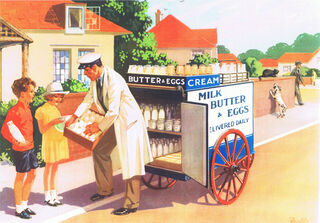
Special thanks to David B. Allison, Ph.D., Dean of the School of Public Health, Indiana University, Bloomington, and his colleagues for including the Behrens reference, Dairy Beloved..., which inspired this blog, on their Obesity and Energetic Offerings.
References
Behrens BM. Dairy Beloved: Why Indiana should stop labeling plant-based beverages as ‘milk.’ Indiana Health Law Review XIX(2): 399-426, 2022.
Collard KM; McCormick DP. A nutritional comparison of cow’s milk and alternative milk products. Academic Pediatrics 21(6): 1067-1069, 2021.
Drewnowski A. Perspective: identifying ultra-processed plant-based milk alternatives in the USDA branded food products database. Advances in Nutrition 12(6): 2068-2075, 2021.
Gambert I. Got Mylk?: the disruptive possibilities of plant milk. Brooklyn Law Review 84(3): 801-839, 2019.
Irfan U. ‘Fake milk’: why the dairy industry is boiling over plant-based milks. https://www.vox.com/2018/8/31/17760738/almond-milk-dairy-soy-oat-labeli…. (retrieved 10/2/22.)
Kurlansky M. Milk: A 10,000-Year History. London: Bloomsbury Publishing, 2018.
Mäkinen OE et al. Foods for special dietary needs: non-dairy plant-based milk substitutes and fermented dairy-type products. Critical Reviews in Food Science and Nutrition 56(3): 339-349, 2016.
Monteiro CA et al. Ultra-processed foods: what they are and how to identify them. Public Health Nutrition 22(5): 936-941, 2019.
Moreno ME; Berman J. Can nondairy beverages be called milk? The SciTech Lawyer 15(2): 24-30, 2019.
Moss R et al. An investigation into consumer perception and attitudes towards plant-based alternatives to milk. Food Research International 159: 111648, 2022, (10 pages.)
O’Grady C. Ancient Europeans farmed dairy—but couldn't digest milk. Science 377(6605): 456, 2022.
Oxford English Dictionary. Milk. (retrieved 10/25/22.)
Paul AA et al. Milk analog: plant-based alternatives to conventional milk, production, potential and health concerns. Critical Reviews in Food Science and Nutrition 60(18): 3005-3023, 2020.
Plutarch. The Parallel Lives: The Life of Romulus. Volume 1: Loeb Library Classical Library Edition, 1914, pp. 1-44.
Ruhräh J. Animals as Wetnurses (Pediatrics in Art), The American Journal of Diseases of Children 48(6): 1369, 1934.
Sethi S; Tyagi SK; Anurag RK. Plant-based milk alternatives: an emerging segment of functional beverages: a review. Journal of Food Science and Technology 53(9): 3408-3423, 2016.
Silva ARA et al. Health issues and technological aspects of plant-based alternative milk. Food Research International 131: 108972, 2020, (17 pages.)
Singhal S; Baker RD; Baker SS. A comparison of the nutritional value of cow-milk and nondairy beverages. Journal of Pediatric Gastroenterology and Nutrition 64(5): 799-805, 2017.
Vanga SK; Raghavan V. How well do plant-based alternatives fare nutritionally compared to cow’s milk? Journal of Food Science and Technology 55(1): 10-20, 2018.
Verduci E. et al. Cow’s milk substitutes for children: nutritional aspects of milk from different mammalian species, special formula and plant-based beverages. Nutrients 11: 1739, 2019 (16 pages.)
Wolf CA; Malone T; McFadden BR. Beverage milk consumption patterns in the United States: who is substituting from dairy to plant-based beverages? Journal of Dairy Science 103(12): 11209-11217, 2020.




